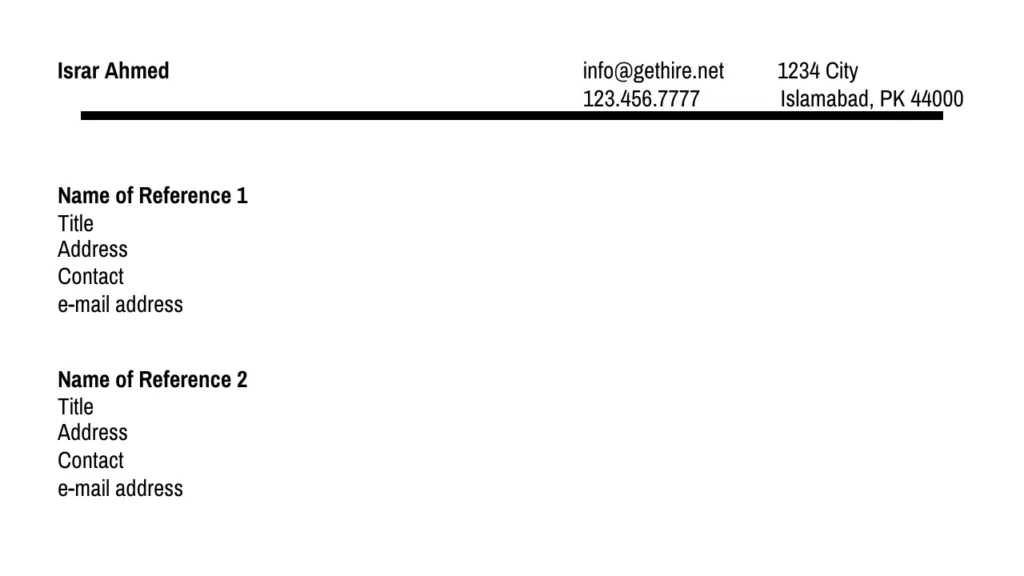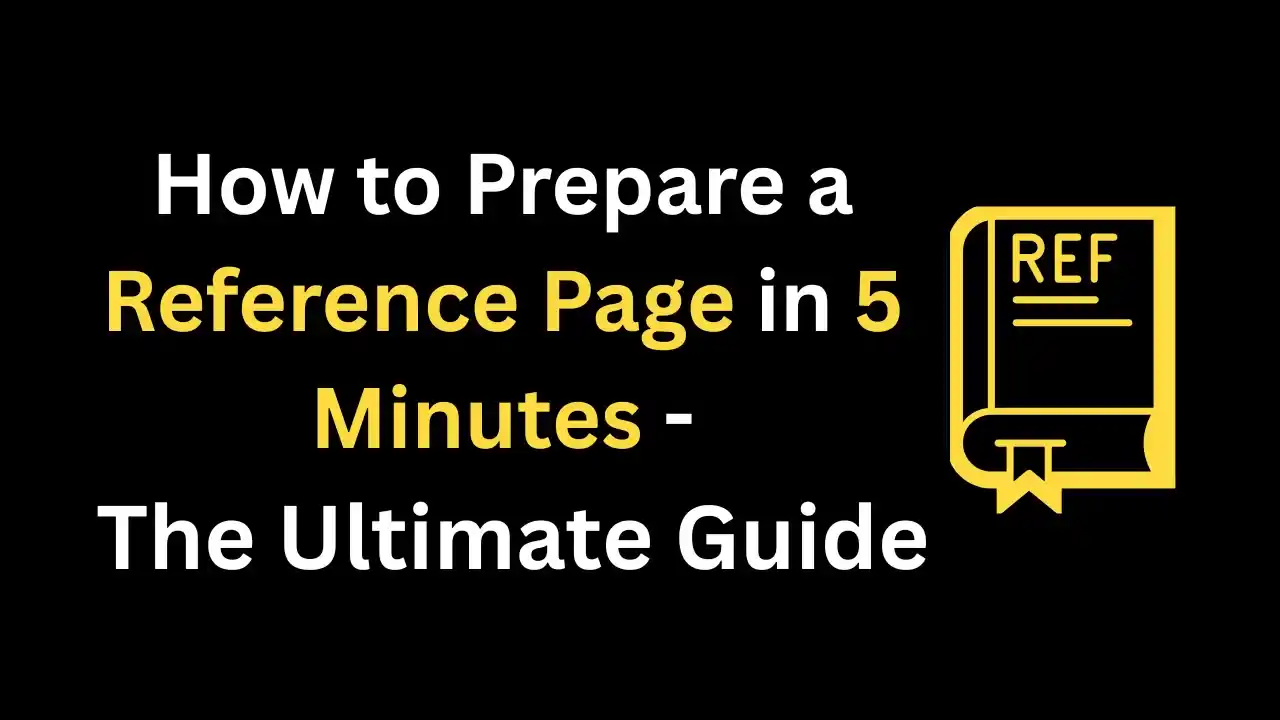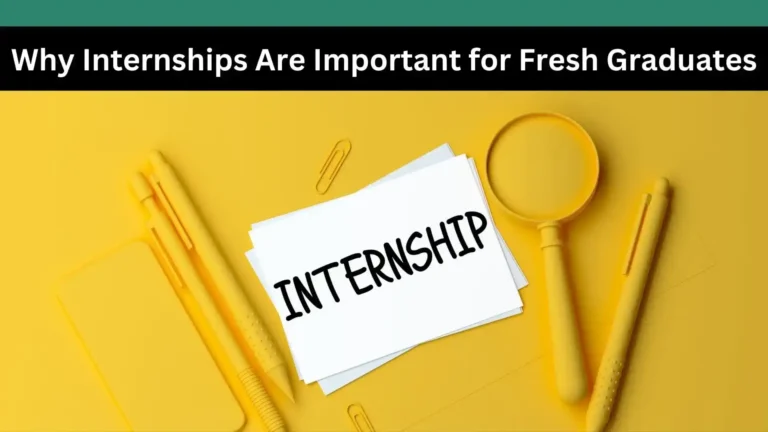Whether you’re wrapping up a research paper, academic essay, or professional report, one of the most overlooked yet crucial components is the reference page. Many people find it time-consuming, but here’s the good news—you can learn how to prepare a reference page in just 5 minutes with the right approach.
A well-structured reference page not only boosts your credibility but also ensures your work adheres to academic standards. The process becomes incredibly simple when you use reliable citation tools like ZoteroBib, Citation Machine, or Scribbr. Start by gathering all your sources, then choose the correct citation style (APA, MLA, or Chicago), and finally input the details into a citation generator.
This guide walks you through how to prepare a reference page quickly, without compromising accuracy. You’ll discover step-by-step methods and time-saving tricks that make formatting references fast and stress-free. Whether you’re a student, researcher, or content creator, these tips will help you produce a polished reference list that meets professional standards.
So, if you’re in a hurry or just want to simplify the citation process, follow this quick guide on how to prepare a reference page—you’ll be done before your coffee cools!
Table of Contents
📚 What is a Reference Page?
A reference page (also known as a bibliography or works cited page) is a list of all the sources you cited or consulted in your document. It’s essential in both academic and professional writing to:
- Give credit to original authors
- Avoid plagiarism
- Allow readers to locate your sources
Depending on the style you’re using—APA, MLA, Chicago, Harvard, etc.—the formatting rules may differ. But the goal remains the same: clear, correct, and consistent source listing.
🕔 Can You Really Create One in 5 Minutes?
Absolutely! With the right tools and a bit of know-how, you can create a polished reference page in minutes. Here’s the secret formula:
Source Info + Citation Tool + Style Format = 5-Minute Reference Page
🔧 Step-by-Step: How to Prepare a Reference Page in 5 Minutes
⏱ Step 1: Gather Your Sources (1 Minute)
Before you begin, collect all the necessary details from your sources:
- Author(s)
- Title
- Date of publication
- Publisher
- URL or DOI (for online sources)
- Page numbers (if applicable)
💡 Tip: If you’ve been taking notes digitally or using research tools like Google Docs, Zotero, or Mendeley, this step is even faster.
📑 Step 2: Choose Your Citation Style (30 Seconds)
Check your assignment or publication guidelines. The most common styles include:
| Citation Style | Commonly Used For |
|---|---|
| APA | Social Sciences |
| MLA | Humanities |
| Chicago | History, Publishing |
| Harvard | General Academia |
🛠 Step 3: Use a Citation Generator (2 Minutes)
This is the magic wand. Free online tools can instantly generate citations in any format. Some top tools include:
How to Use One:
- Select your citation style (e.g., APA 7th edition)
- Paste your source URL or ISBN
- Click “Generate Citation”
- Copy the formatted citation to your document
🔄 Repeat for all sources.
🧹 Step 4: Organize Your Reference List (1 Minute)
Once you’ve got all your citations, arrange them:
- Alphabetically by the first author’s last name
- Use a hanging indent (second line and onwards indented)
- Ensure consistent font, size, and spacing
📌 Example (APA Style):
scssCopyEditBrown, A. J. (2021). *Digital tools for writers*. New York Press.
Smith, L. M. (2019). *Research methods simplified*. Academic Journal, 45(2), 123–135. https://doi.org/10.xxxxx
✅ Step 5: Double-Check Formatting (30 Seconds)
Before hitting submit or print:
- Verify punctuation, italics, and capitalization rules
- Check the latest edition guidelines of your chosen style
- Use a style checker tool like Scribbr APA Checker
🎯 Boom! You’ve got a professional-looking reference page in under 5 minutes.
Reference Page Example

🔥 Pro Tips to Save Time
💡 Use Browser Extensions
Install extensions like Zotero Connector or Mendeley Web Importer to save citations on the go.
💾 Save Templates
Keep a pre-formatted reference page template in your preferred style to avoid starting from scratch every time.
🧠 Learn One Style Deeply
Focusing on one style (APA or MLA, for instance) will drastically reduce your editing time over time.
📌 Common Mistakes to Avoid
- ❌ Mixing up citation styles in the same document
- ❌ Forgetting to alphabetize references
- ❌ Using outdated style rules (always check the latest edition!)
- ❌ Not citing images, tables, or data sources
- ❌ Using auto-generated citations without proofreading
🤔 FAQs on Preparing a Reference Page
How many references should be on a reference page?
There’s no fixed number. It depends on how many sources you’ve cited in your work. Always include every cited source.
Is there a difference between bibliography and reference page?
Yes. A reference page includes only the sources you cited. A bibliography may include additional background reading.
What is the fastest way to create a reference list?
Use tools like ZoteroBib or Citation Machine. They allow copy-paste or automatic citation generation from URLs, DOIs, or titles.
Do I need to cite images or graphs?
Absolutely. Any media that is not your own original creation must be cited.
Can I use AI to generate citations?
Yes. Tools like ChatGPT or AI-based citation bots can generate basic citations, but always verify them for accuracy.
📝 Final Thoughts: Be Fast, But Be Accurate
You don’t have to dread the reference page anymore. With digital tools and the right method, you can create a flawless reference page in just 5 minutes.
So the next time you’re racing the clock to meet a deadline, don’t stress. Bookmark this guide, follow the steps, and finish strong!
📣 Recommended Tool for You
Looking for a one-stop solution? Try [ZoteroBib (zbib.org)] — a free and ad-free citation builder that lets you create a shareable bibliography without creating an account.















